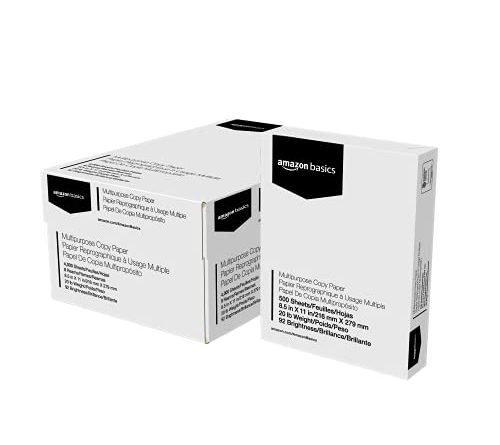
Throughout the day, we all experience peaks and valleys in our productivity levels. Have you ever wondered why? In this article, we will explore the fascinating concept of timing and how it affects your productivity. Discover the science behind circadian rhythms and learn how to identify your personal peak performance hours. Whether you’re an early bird or a night owl, understanding your optimal time of day can revolutionize your work and help you achieve maximum efficiency. So, let’s dive into the world of timing and unleash your true potential!
Benefits of Identifying Your Most Productive Time
Increased efficiency
By identifying your most productive time, you can make the most out of your work hours. When you work during your peak productivity period, you will likely experience increased efficiency in completing tasks. This allows you to accomplish more in less time and frees up additional time for other activities.
Optimal focus
Working during your most productive time allows you to harness optimal focus. Your mind is clear and alert, making it easier to concentrate on the task at hand. With improved focus, you can avoid distractions and stay fully engaged in your work, resulting in higher quality output.
Improved decision making
During your most productive time, your cognitive abilities are at their peak. This means that your decision-making skills are sharper and more effective. With a clear and focused mind, you can make well-informed decisions that contribute to your overall productivity and success.
Better prioritization
Identifying your most productive time helps you better prioritize your workload. By tackling important and demanding tasks during this period, you can ensure that your energy and focus are directed towards tasks that require maximum attention. This allows you to make progress on crucial projects and avoid unnecessary stress.
Enhanced creativity
Your most productive time is also when your creative thinking is likely to flourish. By working during this period, you can tap into your innovative side and come up with fresh ideas. This increased creativity can lead to new and innovative approaches to problem-solving, helping you excel in your work.
Factors Affecting Productivity throughout the Day
Circadian rhythm
The human body operates on a natural rhythm known as the circadian rhythm. This rhythm influences various biological functions, including sleep-wake cycles and energy levels. Understanding your individual circadian rhythm can help you identify your most productive time of day.
Energy levels
Energy levels fluctuate throughout the day, impacting productivity. Some individuals may find themselves more energized and alert in the morning, while others may experience a burst of energy in the afternoon or evening. Recognizing your own energy patterns can help you optimize your productivity.
Workload
The nature and volume of your workload can also impact your productivity throughout the day. If you have demanding and complex tasks, you may find that you are most productive during specific periods when you have the mental energy and focus to tackle them effectively.
Environmental factors
The environment in which you work can significantly affect your productivity. Factors such as noise levels, lighting, and temperature can either enhance or hinder your ability to concentrate and perform tasks efficiently. Understanding how your environment influences your productivity can help you create an optimal work setting.
Personal preferences
Personal preferences play a vital role in productivity. Some individuals thrive in the early morning hours, while others find their groove in the late evening. Having an awareness of your personal preferences can help you align your work schedule accordingly and maximize your productivity.
Morning: Rising with Productivity
Biological advantages of mornings
Mornings offer several biological advantages that can contribute to increased productivity. Hormone levels, such as cortisol, are naturally higher in the early hours, providing a natural boost of energy and alertness. Additionally, exposure to natural sunlight can help regulate your internal clock and improve overall mood and focus.
Improved focus and concentration
The morning hours are often associated with improved focus and concentration. With a fresh mind and fewer distractions, it becomes easier to dive into complex or mentally demanding tasks. Taking advantage of this enhanced focus can result in greater productivity and quality of work.
Tackling complex tasks
Mornings are an ideal time to tackle complex tasks that require deep thinking and analytical abilities. Your mind is rested after a good night’s sleep, allowing you to approach challenging projects with clarity and efficiency. By accomplishing demanding tasks in the morning, you set a productive tone for the rest of the day.
Benefiting from a peaceful environment
Many people find mornings to be a peaceful and quiet time, free from the noise and commotion of the day. This tranquil environment can create an ideal setting for focused work, allowing you to concentrate fully on your tasks without interruptions. Capitalizing on the serene atmosphere can significantly boost your productivity.
Mid-Morning: Sustaining the Momentum
Consolidating morning achievements
Mid-morning is an opportune time to consolidate the achievements of the morning. Take a moment to review completed tasks, celebrate progress, and reflect on goals for the remainder of the day. This reflection helps maintain a sense of accomplishment and motivation, fueling continued productivity.
Leveraging increased energy levels
As the morning progresses, energy levels typically continue to rise. Harness this energy to tackle tasks that require sustained effort and concentration. Break down larger projects into manageable chunks and allocate specific time slots in the mid-morning to make progress on these tasks, leveraging your heightened energy levels.
Strategies for maintaining focus
During the mid-morning, distractions may start to creep in. Implement strategies to maintain focus, such as time-blocking specific tasks, using productivity apps, or practicing mindfulness techniques. These strategies can help you stay on track and reduce the likelihood of productivity dips.
Managing distractions
Identify potential distractions that may arise during the mid-morning, such as emails, phone calls, or social media notifications. Set boundaries to limit these interruptions, such as scheduling dedicated email-checking times or using an app blocker to minimize distractions. By actively managing distractions, you can sustain productivity throughout the day.
Afternoon: Navigating the Post-Lunch Dip
Understanding the natural dip in alertness
The afternoon is notorious for the post-lunch dip, a natural decrease in alertness and energy levels. Understanding this dip can help you adjust your productivity expectations and develop strategies to navigate through this period effectively.
Taking advantage of the siesta effect
In cultures that embrace the siesta tradition, a short nap or period of rest is taken after lunch. This practice can combat the post-lunch dip and increase productivity. If possible, consider incorporating a short power nap or taking a brief walk to revitalize your energy levels and regain focus.
Engaging in collaborative activities
The afternoon can be a great time for collaborative activities that require interaction with colleagues or team members. Group brainstorming sessions or collaborative problem-solving exercises can help stimulate engagement and productivity during this potentially challenging period.
Combatting afternoon drowsiness
To combat afternoon drowsiness, incorporate energizing activities into your routine. Take short breaks to stretch, engage in physical activity, or drink a cup of tea or coffee. These actions can help combat fatigue and keep you alert for the remainder of the afternoon.
Late Afternoon: Regaining Productivity
Regaining focus and momentum
As the workday nears its end, regaining focus and momentum can be crucial for productivity. Reflect on the tasks accomplished during the day and identify any unfinished or lingering projects. Prioritize these tasks and allocate time to tackle them, ensuring that productivity remains high until the end of the day.
Choosing suitable tasks
Late afternoon is an ideal time to tackle smaller, more manageable tasks that require less mental energy. Completing these tasks provides a sense of accomplishment and serves as a transition to wrap up the workday. Prioritize tasks that can be finished efficiently, allowing you to end the day on a productive note.
Utilizing breaks effectively
Incorporate breaks strategically during the late afternoon to maintain productivity. Short breaks can help refresh your mind, prevent burnout, and increase focus. Use this time to relax, rehydrate, or engage in small activities that promote mental clarity and rejuvenation.
Avoiding procrastination
Procrastination can be particularly tempting during the late afternoon when fatigue and distractions may arise. Implement techniques to combat procrastination, such as setting specific goals and deadlines, breaking tasks into smaller steps, or utilizing time management techniques like the Pomodoro Technique. By staying proactive, you can avoid productivity pitfalls and accomplish your goals.
Evening: Harnessing Creativity
Unleashing creative thinking
Evenings often provide a fertile ground for creative thinking and ideation. With the day’s tasks behind you and a more relaxed atmosphere, your mind is free to explore unconventional ideas and approaches. Embrace this opportunity to think outside the box and unlock your creative potential.
Tapping into unconventional ideas
During the evening, your mind may be more receptive to unconventional ideas and unconventional approaches. Take advantage of this open mindset to challenge existing norms and explore innovative solutions. Allow yourself the freedom to think beyond traditional boundaries and reimagine possibilities.
Finding inspiration from external sources
Evenings are an excellent time to draw inspiration from external sources. Engage in activities such as reading, watching thought-provoking videos, or attending creative events. Exposure to new ideas and perspectives can ignite your creativity and provide fresh insights for your work.
Experimenting with different approaches
Utilize evenings as a time to experiment with different approaches to your work. Embrace a spirit of curiosity and try out new techniques or methods that you’ve been meaning to explore. By stepping out of your comfort zone and embracing experimentation, you can enhance your creativity and expand your capabilities.
Night: The Late-Night Hustle
Maintaining a nocturnal routine
For individuals who thrive during late hours, maintaining a nocturnal routine can be beneficial. When the world is quiet and you have uninterrupted time, your productivity can soar. Establishing a consistent routine allows you to fully embrace your night owl tendencies and optimize your work during these hours.
Capitalizing on quiet working conditions
Nighttime offers peace and quiet, creating an ideal environment for focused work. The absence of distractions, such as phone calls or office chatter, allows you to immerse yourself in deep work. Take advantage of this tranquility to accomplish tasks that require intense concentration and minimize interruptions.
Managing sleep deprivation
Working late into the night can lead to sleep deprivation if not managed properly. Prioritize your sleep by establishing a consistent sleep schedule and ensuring that you get an adequate amount of rest. Incorporate short power naps or breaks to refresh your mind and prevent burnout.
Balancing work and personal life
Working late into the night can disrupt the balance between work and personal life. It’s essential to set boundaries and allocate time for personal activities, relaxation, and social connections. Strive for a healthy equilibrium to ensure overall well-being and sustained productivity.
Identifying Your Personal Productivity Patterns
Self-reflection and awareness
Self-reflection is crucial in identifying your personal productivity patterns. Take time to analyze your energy levels, focus, and performance at different times of the day. Pay attention to when you feel most energized and when your concentration levels are highest. This self-awareness is the first step towards optimizing your productivity.
Keeping a productivity journal
Maintaining a productivity journal can help track your daily activities and their impact on your productivity. Record your mood, energy levels, and task performance throughout the day. Note any patterns or trends that emerge, enabling you to identify your most productive time and make adjustments as needed.
Analyzing task-specific performance
In addition to overall productivity, it’s essential to analyze your performance with specific tasks. Identify which tasks you excel at during specific times of the day. This analysis can help you allocate your most productive time for tasks that require critical thinking, creativity, or collaboration.
Experimenting with different schedules
Don’t be afraid to experiment with different schedules to find the optimal match for your productivity patterns. Shift your work hours to different times of the day and observe how it affects your energy, focus, and overall productivity. Continually refine your schedule based on the results and feedback from your productivity journal.
Seeking feedback
Seek feedback from colleagues, supervisors, or mentors regarding your performance and productivity. Others may provide valuable insights into your strengths and weaknesses during specific times of the day. Their observations can complement your self-analysis, allowing you to further refine your understanding of your personal productivity patterns.
Tips for Maximizing Productivity at Any Time
Creating a conducive work environment
Design your workspace to be comfortable and free from distractions. Arrange it in a way that supports your personal preferences and work style. Consider factors such as lighting, noise levels, and ergonomics to create an environment that allows you to work efficiently and stay productive.
Establishing a routine
Establishing a consistent routine can help train your body and mind to anticipate productivity at designated times. Set specific work hours and stick to them consistently. This routine can help create a sense of structure and discipline, increasing your overall productivity.
Setting clear goals and deadlines
Clearly define your goals and set realistic deadlines for each task. Having clear objectives and deadlines helps you stay focused and motivated. Break down larger projects into smaller, actionable steps to make them more manageable and track your progress effectively.
Practicing effective time management
Develop effective time management strategies to maximize productivity. Prioritize tasks based on importance and urgency, delegate when necessary, and avoid multitasking. Utilize time-blocking techniques and productivity apps to structure your day and allocate specific periods for focused work.
Maintaining work-life balance
While productivity is important, it’s essential to maintain a healthy work-life balance. Allocate time for self-care, relaxation, and quality time with loved ones. By maintaining a well-rounded lifestyle, you can prevent burnout and sustain long-term productivity and well-being.
In conclusion, identifying your most productive time can greatly enhance your efficiency, focus, decision-making abilities, prioritization skills, and creativity. By understanding the factors that affect your productivity throughout the day and leveraging specific time periods to your advantage, you can optimize your workflow and achieve peak performance. Incorporate strategies such as maintaining a routine, creating an optimal work environment, and seeking feedback to further refine your productivity habits. Remember, productivity is subjective, and what works best for you may vary from others. Embrace self-awareness, experiment with different approaches, and continuously adapt your schedule to unleash your true productivity potential.






